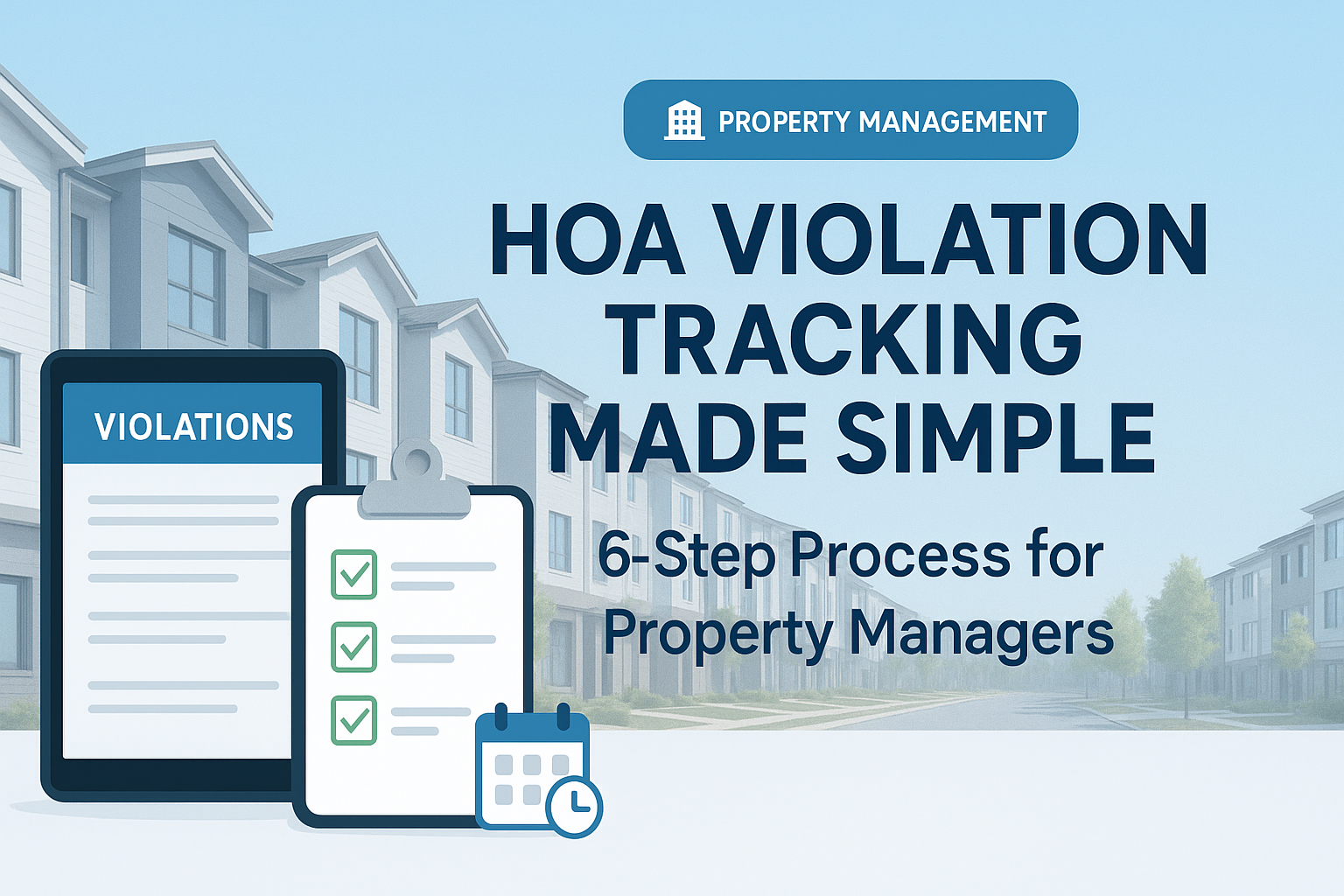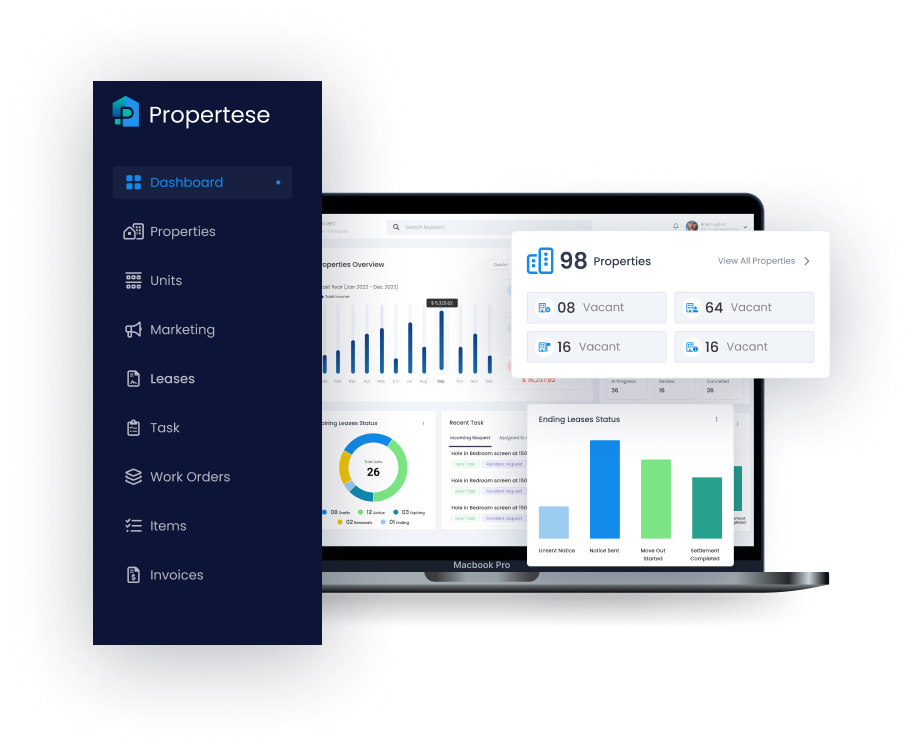
Wondering how to track HOA violations? If you are a HOA manager, you recognize the headache of tracking violations all too well:
- Endless complaints from residents.
- Bundles of violation notices to be sent out.
- Arguments over rules and regulations nobody wants to follow.
HOA violations are an administrative nightmare for property managers. Miss one step, and you’re in danger of legal nightmares, resident aggravation, and even community disturbances.
The good news is that with the proper system in place, tracking violations doesn’t have to be a nightmare. On the contrary, it can be systematic, transparent, and equitable, so it can protect both residents and the HOA.
We’ll take you through a 6-step process of foolproof HOA violation tracking specifically written for property managers who need efficiency, compliance, and peace of mind.
What Are HOA Violations?
HOA violations involve homeowners breaking rules listed in the Covenants, Conditions, and Restrictions (CC&Rs). These provisions aim to uphold community standards and preserve property value.
Some common HOA violations include:
- Parking in off-limits areas
- Keeping pets that are larger or of a restricted breed
- Exterior alterations without permission
- Noise disturbances and nuisance conduct
- Neglect to maintain the yards or appearance of the property
For instance, if the owner constructs a shed without HOA approval, it could invoke a violation since it alters the look of the community.
HOA Brief 2023 reported that almost 74 million Americans reside in HOA-governed communities, which makes rule enforcement a daily reality for property managers.
Why Is Violation Tracking Important?
Tracking and monitoring violations fairly and consistently is the essence of community trust. If residents of a community feel that some of the rules are enforced and others are not, conflict will arise. A clear system assures everyone that they will be treated equally.
Accurate tracking of violations also safeguards property values. Even simple violations like neglected landscaping or constant noise issues can annoy neighbors and ruin the reputation of the community. Legally, documented records keep the HOA safe when complaints escalate.
And for property managers, structured tracking is time-saving. Rather than going through paper files or sending manual reminders, you have it all documented and automated.
Many modern property managers now rely on community association management software to enforce rules and make sure they are applied fairly across the board.
Pro tip: Good HOA accounting practices also go hand-in-hand with transparent rule enforcement.
6-Step Process to Track HOA Violations
Now, let’s get down to business. Here’s a step-by-step procedure property managers can use to manage HOA violations efficiently.

Step 1: Review HOA Rules and Ensure Legal Compliance
How do you ensure that HOA rules are enforceable?
Before imposing any violation, ensure that the HOA rules are:
- Current: Dated rules will not comply with local legislation.
- Legal: Double-check against state laws.
- Clear: Ambiguity leads to disputes.
Example: If the CC&Rs state “no commercial vehicles,” clarify what’s included (e.g., business-signage vans).
You can also explore our guide on navigating real estate legal and operational requirements to keep your policies enforceable.
Step 2: Establish a Formal Violation Process
What is the correct process for HOA violation tracking?
Create a standard process so each violation is dealt with in a similar manner:
- Violation noticed or reported
- Documentation gathered (photo, date, description)
- Send first notice (warning letter)
- Follow-up on the notice (if the violation persists)
- Impose a fine (if required)
- Escalation to take legal action or a lien if unresolved
Example: A homeowner paints their residence lavender without permission. Step 1 is documentation (photographic proof). Step 2 is a warning letter. On refusal, a fine should be imposed.
A well-documented violation process helps avoid the pitfalls of poor record-keeping, similar to how property management trust account practices protect financial compliance.
Step 3: Use Standardized Violation Notice Templates
What does an HOA violation letter need to contain?
All notices should explicitly mention:
- The rule violated
- Evidence (picture, date, time)
- How to correct the violation
- Compliance deadline
- Penalty if the notice is ignored
Step 4: Document and Track Every Violation
How do property managers monitor HOA violations?
Unless well-documented, disputes get complicated. Utilize a centralized system like Propertese (not legacy systems like spreadsheets) to track and monitor:
- Date and time of violation
- Resident information
- Photo or video proof
- Notices issued
- Resolution status
Example: When a resident claims they “never received a warning,” property managers can show electronic records with emails and notifications through centralized systems.
Step 5: Leverage Resident Portals and Automation
Can a property management software assist with HOA violation tracking?
Yes! Advanced HOA management software (such as Propertese) assists property managers to:
- Upload proof of violations directly from a smartphone
- Automatically send violation notices
- Monitor fine payments on an online platform
- Facilitate residents to raise concerns or settle via portals
Example: Rather than sending a paper letter, managers can send a digital violation notice via the resident portal. The homeowner is instantly notified and can pay fines or provide evidence of compliance online.
Curious how else automation helps? See this breakdown of the benefits of automation in property management.
Step 6: Educate Residents and Encourage Communication
How can you prevent HOA violations before they occur?
The greatest violation is the one that never happens. Some HOA violation preventative measures include:
- Send periodic reminders (e.g., yard work during summer)
- Host community Q&A sessions regarding rules
- Share “Top 10 Common Violations” via brochures or newsletters
- Invite residents to request approval before making any change in the property
Example: If your HOA prohibits short-term rentals, send reminders yearly during holiday seasons when residents start to consider Airbnb. A well-informed community minimizes HOA violations, fosters trust, and saves time for property managers.
Final Thoughts
HOA violations tracking does not have to be daunting. With the above step-by-step process, you can impose order and fairness to a system that usually feels chaotic.
Being a property manager, if you follow this 6-step process to track HOA violations, you can save time, avoid conflicts, and contribute to maintaining community peace. And with the help of tools such as Propertese, tracking violations can be easier and more transparent than ever.
If you want to explore Propertese and its capabilities to track HOA violations, you can book a demo with us.
Table of Contents
Stay Updated
Subscribe to get the latest news, industry trends, blog posts, and updates...




